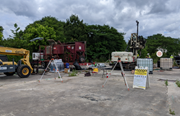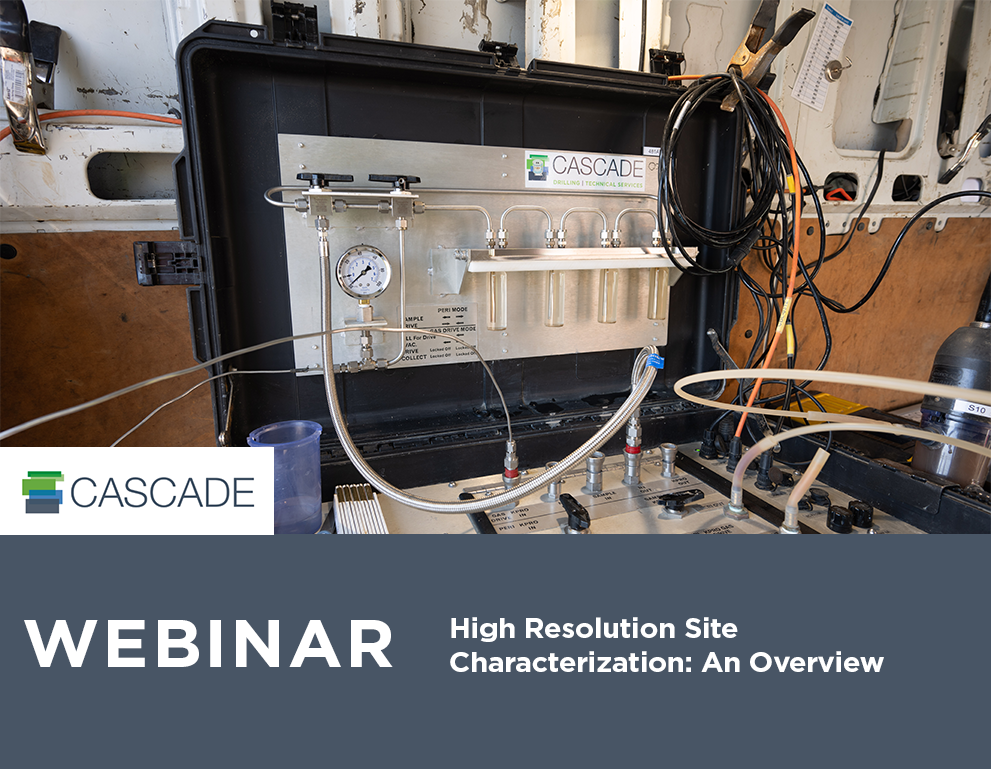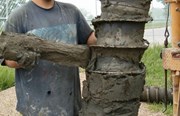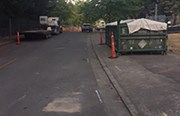9 Questions Consultants Ask About Injected Remedies
The success of an injection project isn’t guaranteed once you’ve landed on the right chemistry or approach. There are myriad details and decisions that can influence the project outcomes, and it’s important to understand which ones matter most and how to tackle them.
In last week’s webinar I covered the basics of planning a successful in situ injection project (if you missed it, you can watch it here). But it’s hard to cover everything in an hour, and I received some excellent questions from participants that many of you may have, too. In this blog post, I’ll share my answers.
How do you ensure sufficient contact of the in situ chemical oxidation (ISCO) injectant with the contaminant?
Contact requires actual direct contact during injection and through advection, diffusion and dispersion post-injection. For soluble amendments, direct contact requires injection below fracture pressures in transmissive zones and a % pore volume injected that is supported by the radius of influence (ROI) design.
What are the best methods to avoid daylighting?
First, having realistic expectations of setting the top of the injection zone. Closer to the surface there is a higher probability of daylighting. This is especially important when injecting into shallow fine grained soils.
For transmissive zones, staying below fracturing pressures will keep amendments in the target intervals. Using inner-hose DPT technology also prevents tools from plugging as tools are added or removed. Additionally, larger diameter of drill tooling creates a better seal with the formation. All previous investigative boreholes at the site should be checked for adequate completion. Finally, alternating injection locations and top-down or bottom-up progression may provide the best option, but could also compromise distribution.
When should a contractor like Cascade be involved/contacted when considering an injection design and implementation?
This should occur at the initial stages of the project once the conceptual site model (CSM) is completed, or earlier if high resolution design optimization (HRDO) is needed to complete the CSM. Cascade can then provide support on the best chemistries to achieve treatment goals, taking into consideration lithology challenges. For example, do not inject liquids into clays or solids into sand.
Following chemistry selection, Cascade can support the design for ROI and supporting injection volumes with design flow rates and pressures. In many cases, treatment expectations are not realistic for site conditions, and Cascade can support identifying the best return on investment for remediation to be implemented.
Would it be prudent to do a water injection first to determine radius of influence (ROI) before moving forward with the full-scale design and implementation?
Water injection is always a good idea to identify expected injection pressures and flows, and optimize injection tooling applied. This eliminates selecting the wrong chemistry that does not map to the lithology. ROI can be determined with tracers (e.g., bromides, fluorescent dyes, the actual liquid amendment); however, it should be noted that the radius of distribution (ROD) is what is achieved once injection is completed and is the additional distribution that occurs through advection and depending on groundwater velocity and amendment persistence. It could take weeks after injection to actually achieve the design ROI.
How do you control plume displacement risks?
There is always a balance between distribution and contact by injecting high % pore volumes of transmissive zones and displacing the plume. Extraction and recirculation of groundwater for dilution water will help maintain hydraulic control if extraction rates are reasonable. As with distribution, injecting below fracture pressures is also important. Also, during fracturing applications it is important to design for a ROI that does not provide for the potential for creating new flow paths that could leave the injection area. Some practitioners have recommended an outside-in progression of injection locations.
What are some considerations for potential follow-up in situ injections?
Follow-up injections may be required due to the amount of mass in groundwater, soil, and NAPL that can be targeted with a reasonable dose of amendments. It can take multiple events to chip away at mass sorbed to soil or DNAPL phase. Follow-up injections can also be required due to the lack of distribution/contact of the amendment and contaminants during injection, or it can be that the amendment dosing was not accurate, and unaccounted for mass was identified during injection. Finally, it's possible the chemistry selected provides reactions are not especially effective for the contaminants in play, e.g., TBA, MTBE, chlorinated ethanes and methanes, especially where MCLs are the expectations.
How are people typically handling injection water related to PFAS, since public water supplies can be impacted?
At this time, I do not believe that our industry has focused on this and if it is actually an issue. Depending on existing and future regulations, it may be prudent to test the dilution water source for regulated PFAS.
When injecting H2O2, what gases are generated if injecting into hydrocarbons (i.e., O2 & CO2)?
Carbon dioxide and oxygen are generated, and combustible gases can also be liberated based on the heat generated from the reaction. These are usually not a concern when injecting into dilute plumes or inactive facilities.
However, as the concentrations increase in groundwater, soil and LNAPL, heat generation can be substantial and monitoring for combustible gases should be part of the HASP. In the past there have been some well documented explosion events related to injection of hydrogen peroxide (usually activated with iron) at active gas stations. It should also be noted that all components of the injection system need to be vented, since trapped hydrogen peroxide in a dirty valve or pipe will expand and breach this equipment and those in the line of fire, at substantial risk of injury.
How often anaerobic injection, and does it present an explosive hazard when drilling verification borings?
Generally, the amount of methane accumulated poses insignificant explosive hazards. There have been numerous papers/opinions published on the topic (see this and this and this). Just the same, one should understand the methane generation potential and its ability to breach the surface at concentrations that could pose explosive risks.
There are always going to be questions about injected remedies, and I’m happy to answer them! In fact, next month my colleagues and I are hosting a webinar designed just for that purpose. Ask the Experts: Injected Remedies is a moderated Ask Me Anything session, you’ll have the chance to ask a panel of injection technology experts anything you’ve been curious about and get the answers in real-time.












